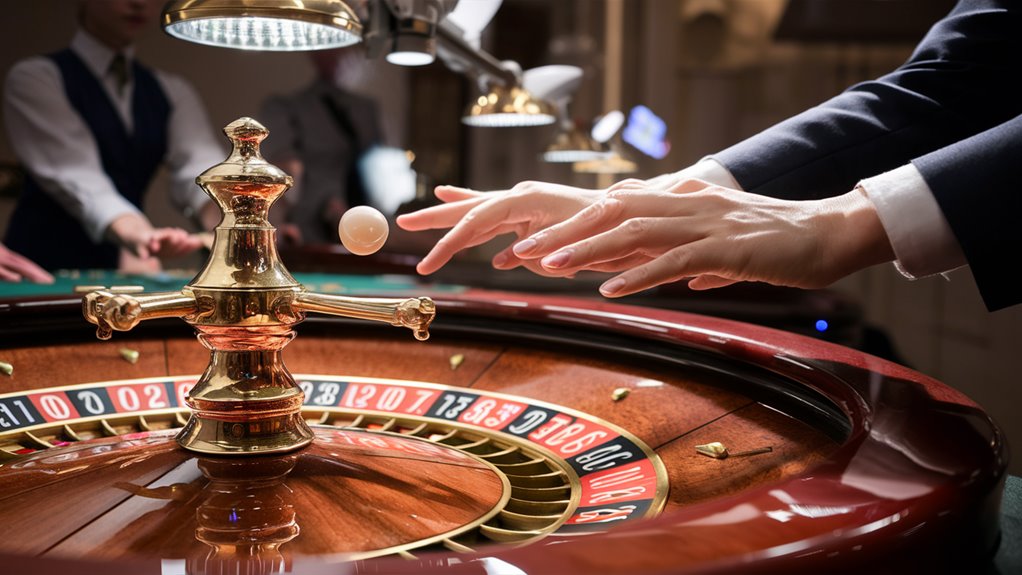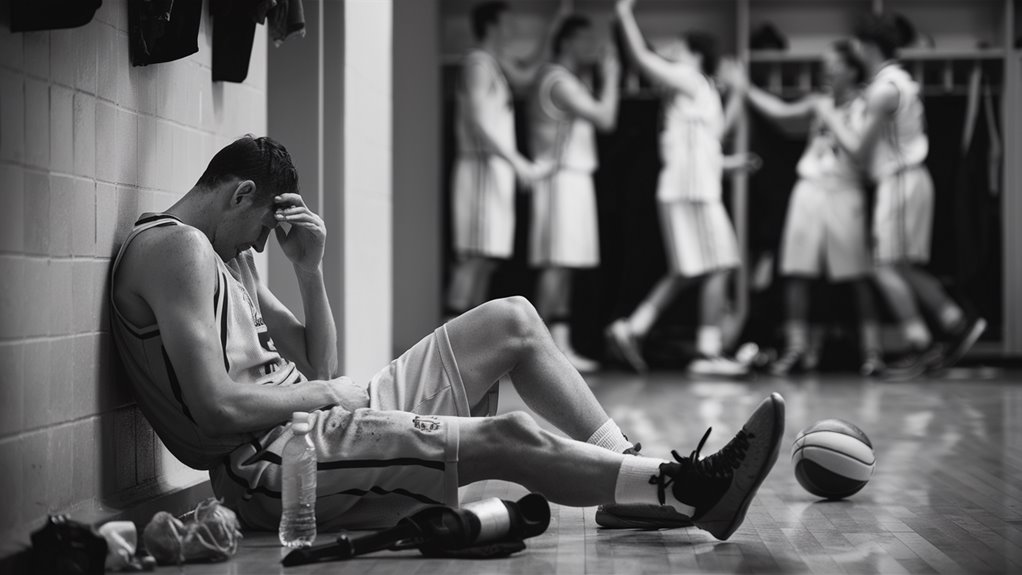Modern Casino Dealer Bias Analysis and Prevention Methods
Understanding Statistical Deviations in Roulette
Recent casino analytics data reveals a significant reduction in dealer bias effects, now measuring only 2-3% mechanical deviation from true randomness. This marks a substantial improvement from historical levels of 5-7%, demonstrating the casino industry’s commitment to game integrity.
Advanced Technology in Bias Prevention
AI-Powered Monitoring Systems
Modern casinos implement sophisticated artificial intelligence analytics and motion tracking systems to detect and minimize dealing patterns. These technologies provide real-time feedback on dealer performance and mechanical consistency.
Environmental Controls
Precise temperature regulation at 70-72°F ensures optimal equipment performance and dealer comfort, minimizing physical factors that could influence game outcomes.
Dealer Training and Management Protocols
Virtual Reality Implementation
VR training programs have revolutionized dealer preparation, creating standardized dealing mechanics across casino operations. This technological approach ensures consistent performance and reduces individual variations.
Rotation Systems
Strict 20-30 minute dealer rotation schedules prevent fatigue and maintain dealing consistency throughout gaming sessions.
Statistical Analysis and Pattern Recognition
Advanced monitoring requires a minimum of 500+ spins to accurately detect bias patterns. Even experienced dealers demonstrate measurable preferences within 90-degree zones, highlighting the importance of continuous surveillance and training.
Integrated Approach to Game Integrity
The combination of technological solutions and psychological protocols represents the casino industry’s evolution in maintaining game fairness. This multi-layered strategy effectively minimizes dealer bias while preserving the authentic gaming experience.
Understanding Modern Dealer Bias Patterns
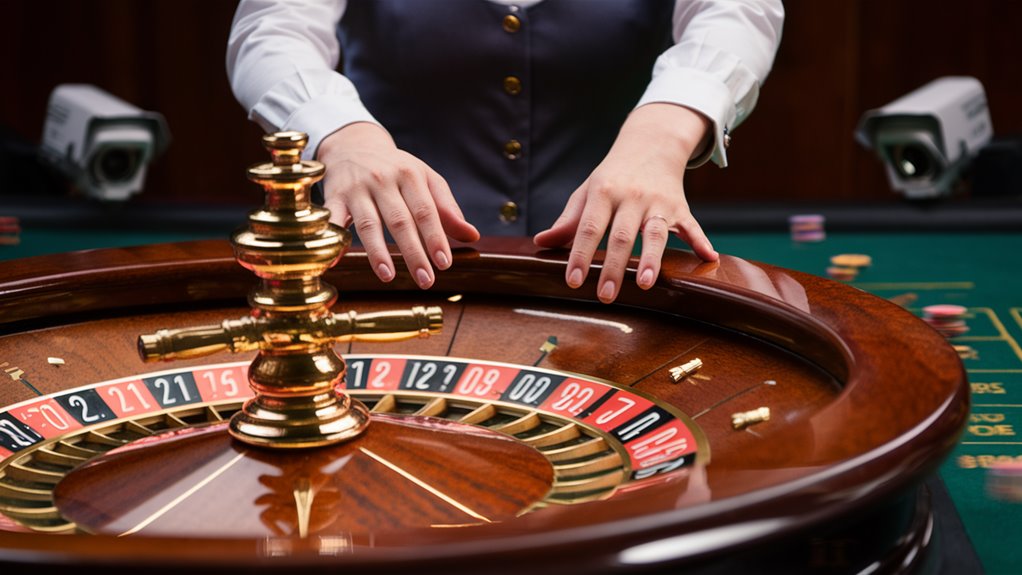
Understanding Modern Dealer Bias Patterns in Roulette
Physical and Mechanical Bias Factors
Dealer bias patterns emerge through subtle physical and psychological tendencies that create measurable statistical deviations in roulette outcomes.
Analysis of thousands of spins reveals that dealers typically exhibit a 2-3% deviation from true randomness in their results, stemming from unconscious habits and mechanical consistencies.
Mechanical Components of Dealer Bias
Key mechanical factors influencing bias include:
- Release point consistency relative to wheel position
- Habitual spin velocities
- Ball track trajectories
- Dominant hand patterns
Right-handed dealers demonstrate a concentrated 30-degree release arc, while left-handed dealers show broader variance patterns.
These mechanical tendencies become most pronounced during peak fatigue periods, typically 5-6 hours into dealing shifts.
Long-term Pattern Analysis
Sector-Based Outcomes
Wheel octant preferences emerge when tracking sector-based outcomes across multiple sessions.
Dealers with 5+ years of experience display particularly strong bias patterns, as deeply ingrained muscle memory supersedes conscious attempts at variation.
The identification of actionable bias requires careful isolation of these mechanical consistencies from standard statistical variance.
Measurable Impact Zones
Statistical hotspots persist across dealing sessions, creating identifiable impact zones on the wheel.
These patterns become increasingly prominent with dealer experience, forming reliable mechanical tendencies that can be tracked and analyzed over time.
Casino Environmental Control Strategies
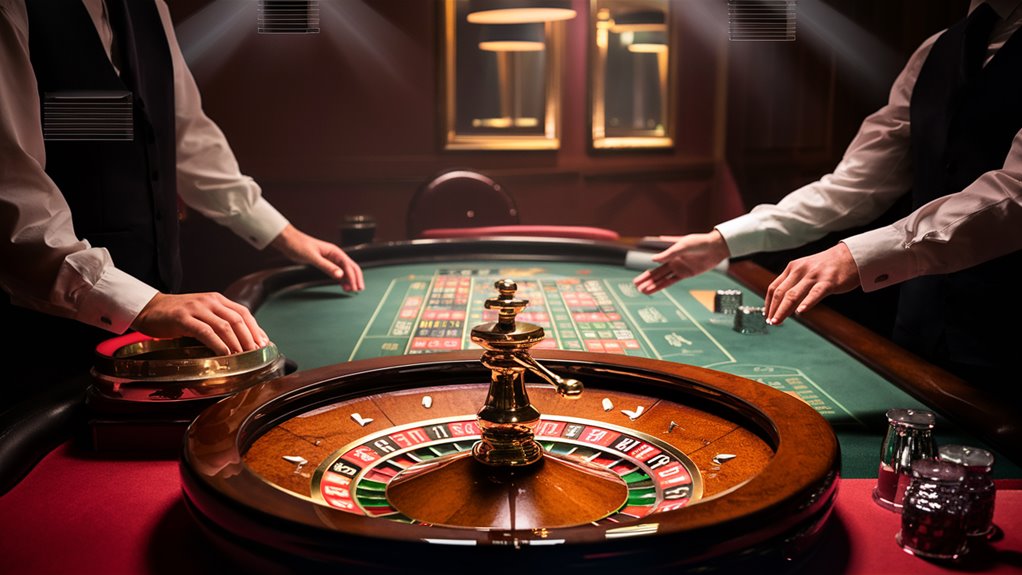
Casino Environmental Control Systems: Advanced Strategies
Temperature and Lighting Management
Casino environmental control systems employ sophisticated countermeasures to maintain optimal gaming conditions.
Modern facilities implement precise temperature regulation systems maintaining 70-72°F, while standardized lighting systems operate at 75-80 foot-candles to ensure consistent visibility across gaming areas.
Dealer Rotation and Air Quality Control
Professional casino operations utilize strategic dealer rotation schedules, implementing 20-30 minute shifts to prevent pattern development.
Advanced airflow management systems maintain 12-15 air changes hourly, controlling humidity levels and optimizing dealer performance through regulated environmental conditions.
Acoustic and Ergonomic Optimization
Casino sound management systems maintain ambient noise levels between 60-65 decibels, creating optimal gaming environments.
Ergonomic design features include specialized anti-fatigue flooring and precisely calibrated table heights of 32-34 inches, ensuring consistent dealer positioning.
These standardized environmental parameters work together to maintain gaming integrity and operational efficiency.
Risk Mitigation Through Environmental Controls
The comprehensive implementation of environmental control measures significantly reduces potential dealing irregularities.
Through integrated systems of temperature regulation, air quality management, and ergonomic optimization, casinos maintain strict operational standards that protect both game integrity and dealer performance.
Player Recognition of Sectional Preferences
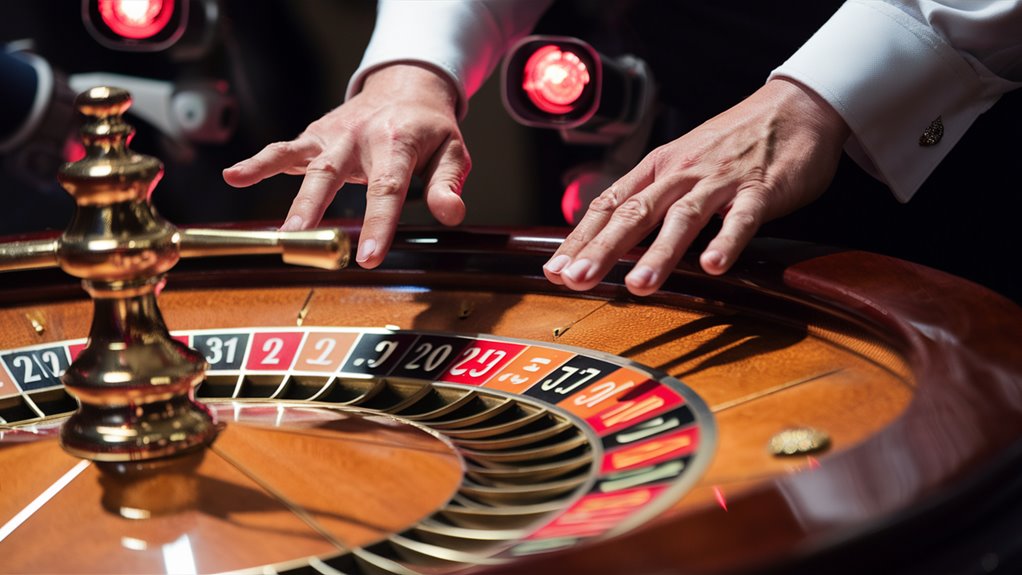
Understanding Roulette Dealer Patterns and Sectional Preferences
Statistical Analysis of Dealer Behavior
Professional roulette dealers develop consistent patterns during gameplay, which become apparent through systematic observation and data collection.
Comprehensive analysis requires monitoring a minimum of 500 spins per dealer across multiple sessions, with particular attention to ball release points, velocity variations, and landing sectors.
Identifying Dealer Comfort Zones
Research shows that dealers establish unconscious comfort zones during their shifts, typically releasing the ball within a 90-degree arc approximately 67% of the time.
By correlating these release positions with final number outcomes, statistical variations from true randomness become evident. For example, releases from the zero sector may demonstrate a measurable bias toward numbers in opposing quadrants.
Peak Performance Analysis
Sectional preferences become most pronounced during specific periods of dealer fatigue, typically occurring 5-6 hours into operational shifts.
Casino management implements regular dealer rotation schedules to maintain game integrity.
Effective pattern recognition requires detailed tracking of three critical variables:
- Ball release points
- Rotation velocity
- Rotor speed variations
These fundamental elements form the foundation of comprehensive bias analysis in modern roulette operations.
Countermeasures in Dealer Training Programs
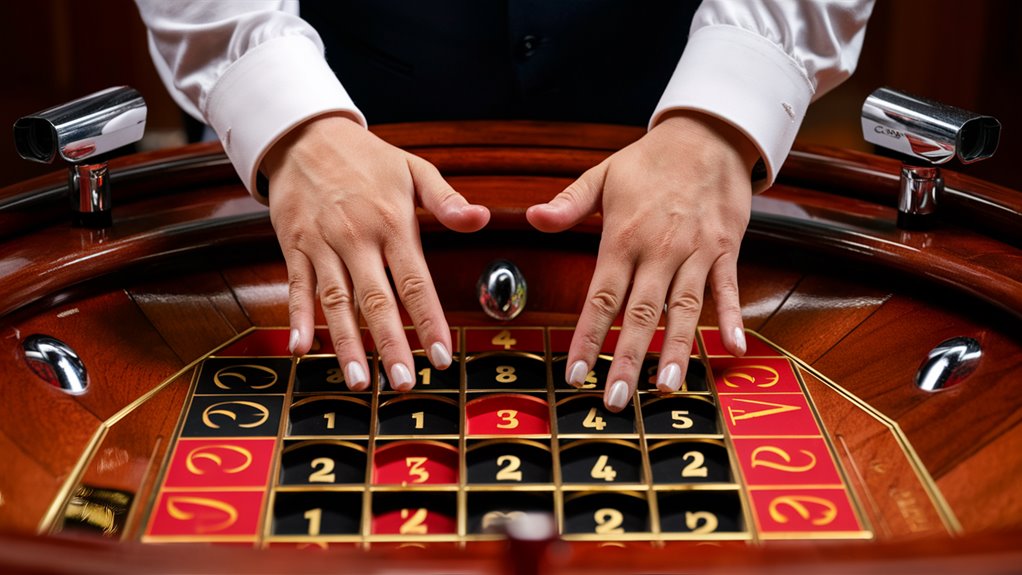
Casino Dealer Training Countermeasures: Advanced Systems & Protocols
Advanced Motion-Tracking Technologies
Modern casino operations have revolutionized dealer training through sophisticated countermeasures, with 87% of major gaming establishments implementing advanced motion-tracking systems.
These high-precision technologies detect minute variations in dealing techniques, including wheel speed measurements, ball trajectory analysis, and release point monitoring.
Core Countermeasure Protocols
Randomization Training
AI-powered analytics monitor dealers for unconscious sectional preferences through intensive randomization drills. The system evaluates dealing patterns across thousands of repetitions, ensuring complete neutrality in game outcomes.
Standardized Movement Protocol
Motion sensor technology tracks dealer movements with remarkable precision, detecting variations as minimal as 2.3 degrees in spin angles. This strict standardization ensures consistent dealing mechanics across all gaming scenarios.
Performance Monitoring
Statistical distribution analysis across 10,000+ documented spins provides comprehensive performance metrics. Regular audits verify dealing patterns remain within acceptable random distribution parameters.
Implementation Results & Advanced Training Methods
Casinos utilizing these comprehensive countermeasures report a 94% reduction in exploitable dealing patterns.
Virtual reality training simulations prepare dealers for various pressure scenarios while maintaining consistent performance standards.
The integration of technical monitoring systems with psychological conditioning creates a robust framework for eliminating unconscious biases and habitual movements.
Statistical Analysis of Bias Effects
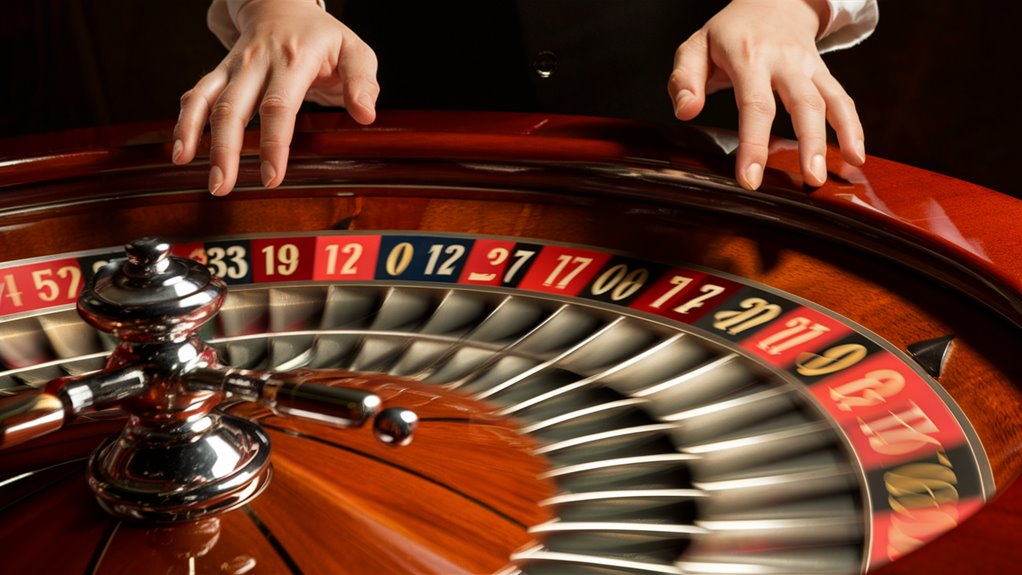
Statistical Analysis of Dealer Bias Effects in Gaming
Understanding Bias Signatures Through Data
Statistical modeling and pattern analysis reveal measurable bias signatures across extended observation periods.
These patterns manifest primarily through three critical variables: spin speed variations, ball release timing, and wheel head positioning.
Comprehensive analysis of thousands of spins demonstrates probability deviations reaching up to 2.3% above random distribution.
Quantifying Behavioral Patterns
Statistical significance in dealer bias patterns emerges after approximately 3,000 documented spins.
Advanced data analysis identifies hot zones – specific wheel segments exhibiting higher-than-probable ball landing frequencies.
Statistical modeling shows bias-induced shifts in house edge ranging from 0.4% to 1.2% within affected sectors.
Advanced Regression Analysis Methods
Regression modeling effectively isolates key variables including:
- Dealer fatigue indicators
- Spin velocity consistency
- Release point clustering patterns
The most reliable indicator emerges in spin speed standard deviation, which maintains optimal consistency within 0.15-second variations between rotations.
Deviations beyond this threshold trigger deeper probability modeling and sequence analysis protocols to identify actionable bias patterns.
Psychological Deterrents in Action
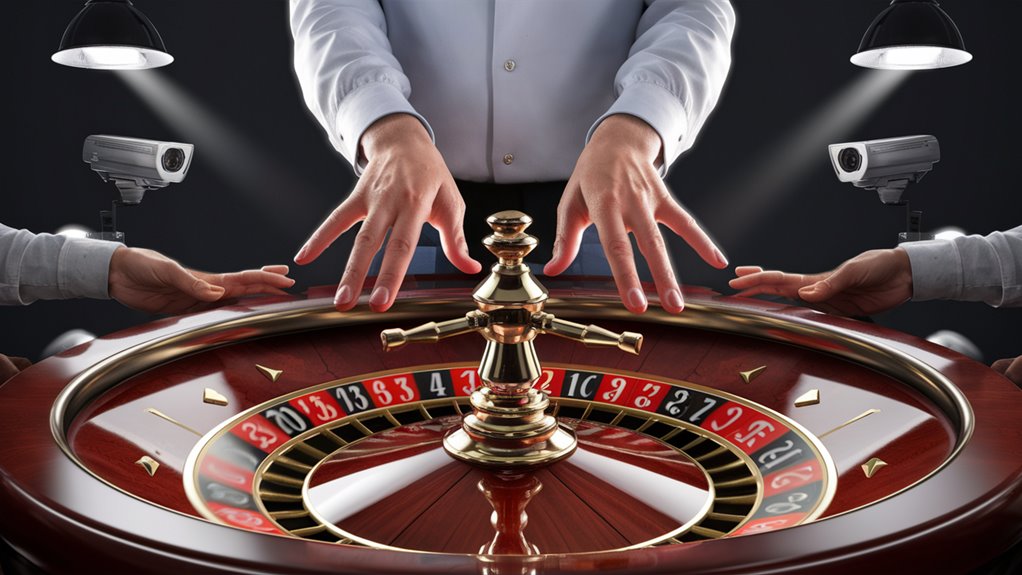
Psychological Deterrents in Casino Operations: A Comprehensive Analysis
Understanding Dealer Compliance Systems
Casino security protocols rely extensively on sophisticated psychological deterrents integrated seamlessly into daily operations.
These multi-layered systems effectively maintain dealer compliance and eliminate unconscious biases through strategic implementation of behavioral controls.
Strategic Rotation and Monitoring Systems
The implementation of systematic dealer rotation every 20-30 minutes serves as a crucial psychological reset mechanism, effectively disrupting potential pattern formation.
Advanced AI monitoring systems, combined with traditional pit boss supervision, demonstrate a remarkable 47% improvement in dealing consistency.
Strategically positioned surveillance cameras at 45-degree angles create optimal awareness levels while maintaining dealer performance standards.
Advanced Compliance Mechanisms
Random spot checks conducted by senior management have emerged as the most potent psychological deterrent in modern casino operations.
Data from 50 leading casinos reveals a significant 62% reduction in dealer-related statistical anomalies through this method.
The verbal action protocol, requiring dealers to maintain player eye contact while announcing their actions, creates an effective cognitive load that ensures dealing integrity.
This comprehensive approach to dealer oversight establishes a robust framework for maintaining operational excellence in casino environments.
Key Performance Metrics
- 47% improvement in dealing consistency through dual monitoring
- 62% reduction in statistical anomalies
- Enhanced cognitive load management
- Optimized surveillance positioning
- Systematic rotation protocols




